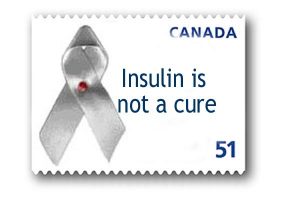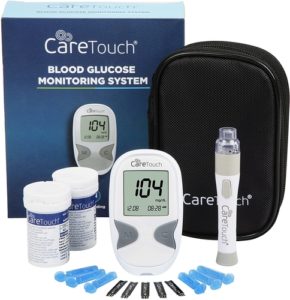6 Signs of Childhood Diabetes
Diabetes is an increasingly prevalent chronic disease among children. However, recognizing the signs of diabetes is a challenge for most parents. Childhood diabetes might not be recognized until the child is very ill primarily because the changes are usually subtle and the onset is quite slow.
Although discovering that your child is suffering from diabetes can be distressing for any parent, it is better to find out early enough than to miss the signs of diabetes completely.
What are the signs of diabetes in children?
- Unquenchable Thirst
Children with undiagnosed diabetes are constantly thirsty.
- Frequent Urination
The urge to urinate a lot is one of the most common early signs of childhood diabetes. In this case, your child goes to the restroom more often than normal or starts wetting the bed all of a sudden even though they were toilet trained before.
Since the child is drinking more, they will also visit the restroom more. However, there can be other reasons for frequent urination such as the inability of the child to empty the bladder completely, urinary tract infection, or Daytime Urinary Frequency Syndrome which is formally known as Pollakiuria.
- Rapid Loss in Weight
This is an extreme symptom of diabetes in children mainly because children rarely lose weight. In this case, the child still loses weight even when they continuously consume plenty of food. Weight loss is usually caused by an inadequate supply of energy in the body. Therefore, the body extracts energy from reserved fat stores.
Besides making the immune system weaker, excessive weight loss in children might also result in weakness and tired feelings. Drastic weight loss in children is a very dangerous sign whether diabetes is involved or not and the child should be taken to the doctor immediately.
- Yeast Infection
Excessive weight loss makes the immune system weaker and prone to plenty of infections. The child might develop rashes on the skin due to yeast infection. Therefore, it is vital to give your child plenty of water to drink and feed him/her a healthy diet.
- Extreme Hunger
A child suffering from diabetes might eat constantly without gaining weight. This can be attributed to the inability of the body to utilize food and in effect, the food simply flows through the child’s digestive system.
- Blurred Vision
The decreased level of fluid in the blood and body tissues including the eye lenses might create vision difficulties. This might cause various eyesight problems including blurred vision. Unfortunately, the child might be unable to detect or even complain about problems with their eyesight.
Untreated diabetes might have serious consequences for the child. Some of the short-term risks include hypoglycemia (low blood sugar), hyperglycemia (high blood sugar), and increased ketones in the urine (ketone acidosis).
Some of the lifelong or long-term risks include; nerve and vascular damage, amputations, blindness, and increased risk of stroke and heart attack. Besides identifying the signs of diabetes in children, it is also the parents’ responsibility to ensure that the child gets a proper diagnosis and also takes medication as instructed by the doctor.
Other Signs of Childhood Diabetes
A breath that smells sweet and like fruit is one of the warning signs of childhood diabetes. This symptom can also be sneaky in that it may be explained as absent from the fruity flavored toothpaste that youngsters use as of late or from the nutritious fruit snacks that they’re fed.
The sweet scent of their breath is really a consequence of diabetic ketoacidosis, which is the body’s attempt to get rid of acetone through the respiratory system.
Sweet-smelling breath is often a signal that poisonous ketones (acid by-products of fats being broken down for power) are constructing up inside the entire body. This symptom out of many signs of childhood diabetes is really an indicator that they urgently need diabetes medication.



 This endoscopic treatment is often combined with physical activity and a balanced diet in order to help you lose weight. A weight loss balloon is often an option for people who have concerns about their weight and exercise and diet haven’t worked for them.
This endoscopic treatment is often combined with physical activity and a balanced diet in order to help you lose weight. A weight loss balloon is often an option for people who have concerns about their weight and exercise and diet haven’t worked for them. Studies indicate that when combined with healthy exercise and diet habits, an intragastric balloon can help patients lose up to 15% of their body weight in 6 to 12 months after the procedure.
Studies indicate that when combined with healthy exercise and diet habits, an intragastric balloon can help patients lose up to 15% of their body weight in 6 to 12 months after the procedure.
 According to the CPhA, when insulin products are not available at a particular pharmacy, it is probably localized and temporary due to higher than expected demand for a drug product.
According to the CPhA, when insulin products are not available at a particular pharmacy, it is probably localized and temporary due to higher than expected demand for a drug product.

 Type 1 diabetes usually manifests itself during childhood or early adulthood, and if not properly cared for, can be quite devastating. Since the body either does not produce or does not respond to insulin, the glucose that is taken in as food can rapidly build in the bloodstream to dangerous levels.
Type 1 diabetes usually manifests itself during childhood or early adulthood, and if not properly cared for, can be quite devastating. Since the body either does not produce or does not respond to insulin, the glucose that is taken in as food can rapidly build in the bloodstream to dangerous levels. How long can you live with diabetes type 1?
How long can you live with diabetes type 1?


